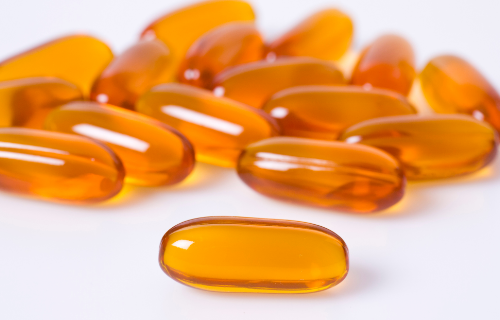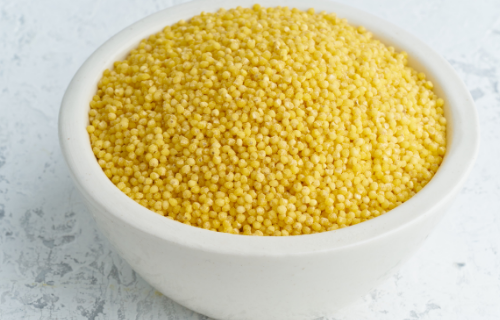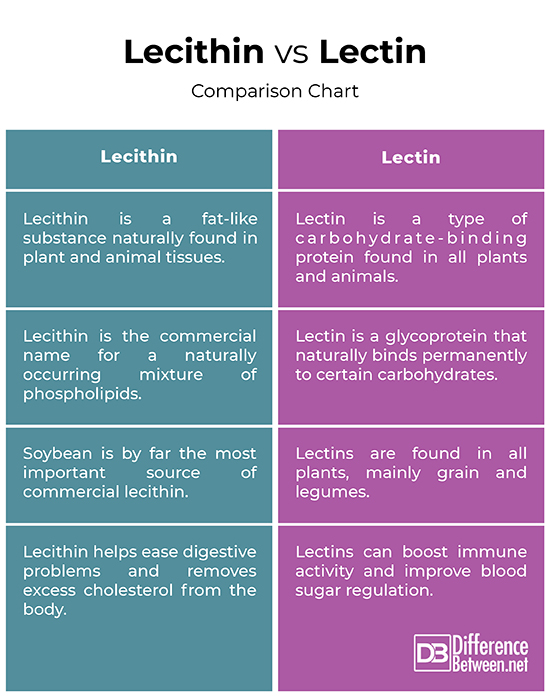Difference Between Lecithin and Lectin
Lecithin and lectin may seem to be the same word, at least from a quick glance. However, both of them are entirely different nutrients wit different characteristics, structure and uses. Lecithin is essentially a fat-like substance whereas lectin is a protein present in plants and animals. Let’s take a look at some key differences between the two.

What is Lecithin?
You’ve probably seen it in certain ingredients, but you do not know exactly what it is. So, lecithin is a fat-like substance that belongs to a larger group of compounds called phospholipids. Lecithin is a food additive which can be found in many foods such as soybeans and egg yolks. In fact, the word lecithin is derived from the Greek term lekithos which means “egg yolk.” An egg yolk would have about 3,362 milligrams of lecithin. So, lecithin is basically a mixture of fats that are essential to human cells.
Lecithin is a food additive that comes from multiple sources. Soybean is by far the most important source of commercial lecithin. It is the gummy material contained in crude vegetable oil which can be obtained by degumming the extracted oil of seeds. Lecithin helps to repair most systems malfunctions in the human body and removes the excess cholesterol from the body. It aids in proper functioning of liver and prevents hardening and blocking of the blood vessels. It also helps in proper circulation of oxygen to all body tissues.

What is Lectin?
Lectin, also known as the anti-nutrient, is a type of carbohydrate-binding protein found in all plants and animals. Lectins are a glycoprotein that naturally binds permanently to protein from the carbohydrates end of the protein. Lectins are ubiquitous because they play a pivotal role in many life processes. They can be identified in microorganisms, plants, and animals. They can be identified based on functional assays or by amino acid sequence homology with known lectin sequences. The most fully characterized lectin groups are those come from plant sources.
Lectins are proteins found mainly in grains and legumes. The same features that lectins use to defend plants may cause several problems including indigestion. It is believed to be a dangerous toxin that aids the increase of cholesterol in body, overweight, and all the coronary health problems. But when cooked properly, foods containing lectins become harmless. But there’s little research that proves the negative implications of having lectins in your diet. More conclusive study is needed to conclude if they are good or bad for your health. But not all kinds of lectins cause harm to your health.
Difference between Lecithin and Lectin
Type
– Lecithin is a fat-like substance naturally found in plant and animal tissues. It is the popular and commercial name for a naturally occurring mixture of phospholipids. It is basically a mixture of fats that are essential to human cells. Lectin, on the other hand, is a type of carbohydrate-binding protein found in all plants and animals. Lectins are a glycoprotein that naturally binds permanently to protein from the carbohydrates end of the protein.
Source
– Lecithin is a food additive that comes from multiple sources. Soybean is by far the most important source of commercial lecithin. It can also be found in many foods such as soybeans and egg yolks. Many foods such as animal, plant and processed foods contain lecithin. Lectins are found in all plants, mainly grain and legumes (lentils, beans, peanuts, peas, soybeans, etc.). Lectins are a component of food; in fact, almost 30% of all our food contains lectins. They are also found in the bark tissues of several tree species.
Function
– Lecithin helps to repair most systems malfunctions in the human body and removes the excess cholesterol from the body. It works as an emulsifier, suspending fats and oils from mixing with other substances. It helps ease digestive problems and prevents hardening and blocking of the blood vessels. Plants use lectin as a weapon to defend themselves from animals and people. Also, lectin-rich foods are associated with lower rates of cardiovascular disease. Lectins can boost immune activity and improve blood sugar regulation.
Lecithin vs. Lectin: Comparison Chart

Summary
In a nutshell, lecithin is a group of fatty substances that belong to a larger group of compounds called phospholipids and naturally found in plant and animal tissues. Lectin, on the other hand, is an anti-nutrient that binds to certain carbohydrates and is believed to be a dangerous toxin that aids the increase of cholesterol in body, overweight, and all the coronary health problems. Lectin is found in almost 30% of the foods we eat. They are found in all plants, mainly grains and legumes. Well, there are many types of lectins, and some are completely safe.
Why is lecithin not good for you?
There are many well known benefits of lecithin, but it can also cause some major side effects like nausea, diarrhea, or stomach pain. It is mostly safe.
What foods are rich in lecithin?
Lecithin can be found in many foods such as soybeans, egg yolks, red meat, organ meats, seafood, cottonseed, sunflower oil, whole grains, milk, peanuts, and more.
What is the purpose of lecithin?
The human body uses lecithin to aid in the metabolic process and to move fats. It helps to repair most systems malfunctions in the human body and removes excess cholesterol from the body.
What is the best source of lecithin?
The two main sources of lecithin are soybean and egg yolk. An egg yolk would have about 3,362 milligrams of lecithin.
- Difference Between Caucus and Primary - June 18, 2024
- Difference Between PPO and POS - May 30, 2024
- Difference Between RFID and NFC - May 28, 2024
Search DifferenceBetween.net :
Leave a Response
References :
[0]Pusztai A. Plant Lectins. Cambridge, United Kingdom: Cambridge University Press, 1991. Print
[1]Ajumobi, Edith. Nutrition for Chronic Disease Prevention and Control. North Carolina, United States: Lulu Press, 2017. Print
[2]Shurtleff, William and Akiko Aoyagi. History of Lecithin and Phospholipids (1850-2016): Extensively Annotated Bibliography and Sourcebook, Including Phosphatides and Liposomes. California, United States: Soyinfo Center, 2016. Print
[3]Nilsson, Carol L. Lectins: Analytical Technologies. Amsterdam, Netherlands: Elsevier, 2007. Print
